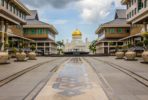“We, Muslims are proud Singaporeans”, were the flinty words a Singapore national servicemen reportedly told The Diplomat magazine in 2014.
He complained that Muslims serving in the Singapore military [were] routinely kept away from critical roles in air and naval units.
His comments to The Diplomat magazine was prefaced by what had happened in Singapore in February 1915. Inexplicably the history books in the city-state have excluded the explosively, seismic event from its curriculum even as it had paralleled the Maria Hertogh riots of 1952.
Still if there is something largely forgotten in Singapore, is the Sepoy Mutiny of 1915 when bands of Indian soldiers, namely Muslims, roamed the streets in the weeks of February 1915 hunting down and killing Europeans. The disgruntled troops were outraged when they learned – though falsely – that they would be sent to fight their co-religionists in Turkey during World War I. After breaking out of their barrack lines in what is today’s Dempsey Road, the mutineers began an orgy of rampage and killings. They even had the help of some Germans interred in Singapore.
The outbreak occurred during Chinese New Year that year. But thanks to some Japanese, French and Russian reinforcements which the British summoned, the mutiny was quickly suppressed.
All the mutineers were then court-martialled and tried and found guilty of the probable crime of treason.
They were all executed in broad daylight at where now stands the Outram Park MRT to the perverted delight of onlookers who cheered when British marksmen began taking aim to shoot and kill the men standing blindfolded before them.
It was something that British would never dare want to do in their own home turf.
As how The Diplomat pointed, for some South Asian historians, the Singapore Mutiny is a sequel to the 1857 Sepoy Mutiny and an important milestone in the struggle for independence. The 5th Light infantry would be disbanded shortly after World War I after serving with the British Army in East Africa. Yet, Singapore would again be the site of another important rebellion involving colonial Indian troops. In 1942, the fall of Singapore, placed 40,000 Indian troops of whom nearly 30,000 would join the anti-British First Indian National Army (INA) under nationalist leader Mohan Singh. That army collapsed but, a second INA under Subas Chandra Bose joined Japanese forces during the Burmese campaign. During World War II, similar but smaller units of Indian soldiers were raised by both Germany and Italy from among Indian POWS. (http://thediplomat.com/2015/02/singapore-a-mutiny-like-no-other)
Next week marks the 102nd anniversary of that uprising and what has been sobering is that has never received any mention in Singapore’s history books.
Source: www.theindependent.sg







